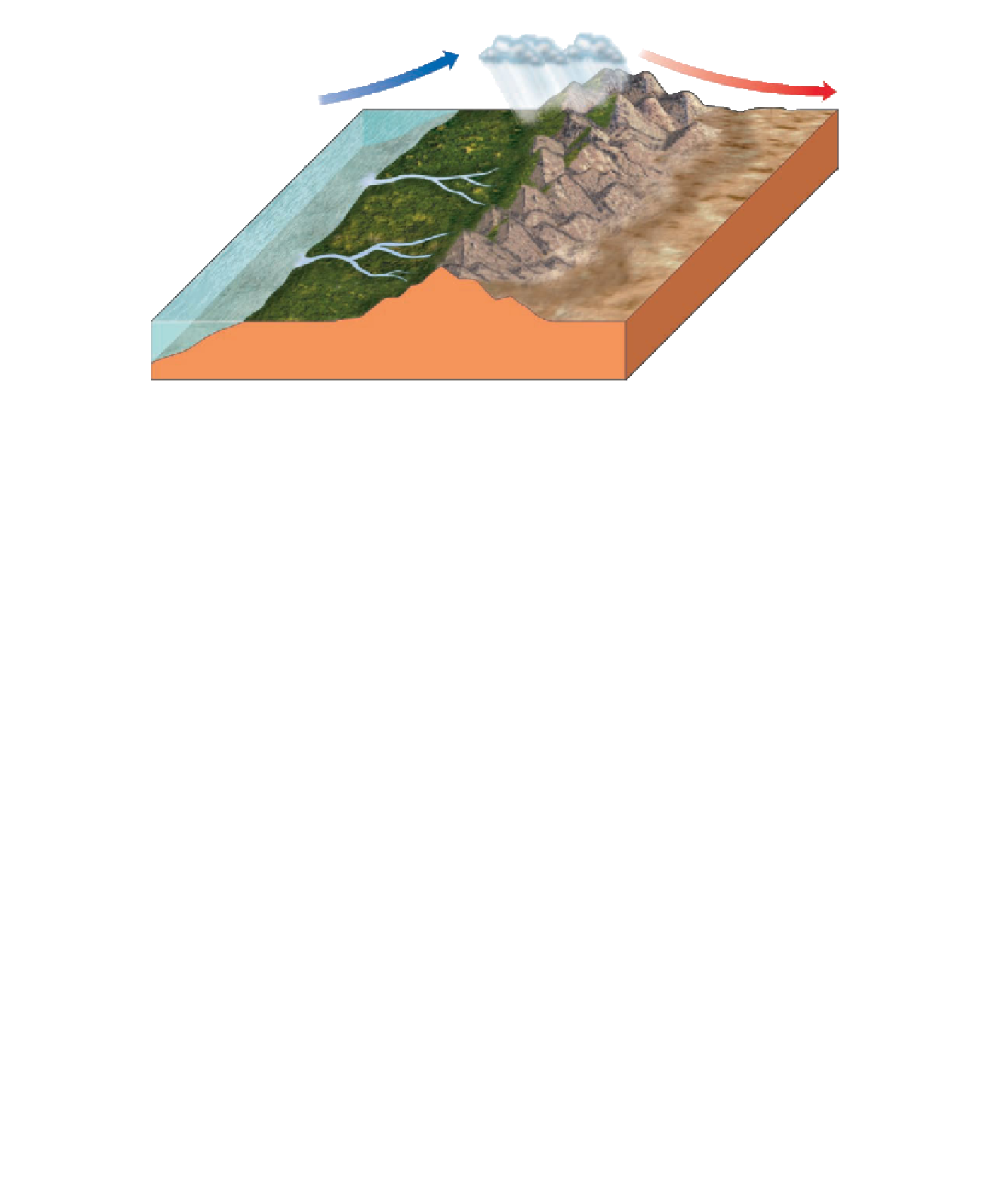Geology Reference
In-Depth Information
Moist
marine air
Warm
dry air
Rain-shadow
desert
◗
Figure 15.18
Rain-Shadow Deserts Many deserts in the middle and high latitudes are rain-shadow
deserts, so named because they form on the leeward side of mountain ranges. When moist marine
air moving inland meets a mountain range, it is forced upward, where it cools and forms clouds that
produce rain. This rain falls on the windward side of the mountains. The air descending on the leeward
side is much warmer and drier, producing a rain-shadow desert.
of mountain ranges that produce a
rain-shadow desert
(
pavement, or sand dunes. Yet despite the great contrast
between deserts and more humid areas, the same geo-
logic processes are at work, only operating under different
climatic conditions.
Figure 15.18). When moist marine air moves inland and
meets a mountain range, it is forced upward. As it rises, it
cools, forming clouds and producing precipitation that falls
on the windward side of the mountains. The air that de-
scends on the leeward side of the mountain range is much
warmer and drier, producing a rain-shadow desert.
Three widely separated areas are included within the
mid-latitude dry-climate zone (Figure 15.17). The largest
is the central part of Eurasia, extending from just north of
the Black Sea eastward to north-central China. The Gobi
Desert in China is the largest desert in this region. The
Great Basin area of North America is the second largest
mid-latitude dry-climate zone and results from the rain
shadow produced by the Sierra Nevada. This region adjoins
the southwestern deserts of the United States that formed
as a result of the low-latitude subtropical high-pressure
zone. The smallest of the mid-latitude dry-climate areas is
the Patagonian region of southern and western Argentina.
Its dryness results from the rain-shadow effect of the An-
des. The remainder of the world's deserts are found in the
cold but dry high latitudes, such as Antarctica.
◗
The heat and dryness of deserts are well known. Many of the
deserts of the low latitudes have average summer temperatures
that range between 32° and 38°C. It is not uncommon for
some low-elevation inland deserts to record daytime highs of
46° to 50°C for weeks at a time. The highest temperature ever
recorded was 58°C in El Azizia, Libya, on September 13, 1922.
During the winter months when the Sun's angle is lower
and there are fewer daylight hours, daytime temperatures
average between 10° and 18°C. Winter nighttime lows can
be cold, with frost and freezing temperatures common in
the more poleward deserts. Winter daily temperature fl uc-
tuations in low-latitude deserts are among the greatest in the
world, ranging between 18° and 35°C. Temperatures have
been known to fl uctuate from below 0°C to higher than 38°C
in a single day!
The dryness of the low-latitude deserts results primar-
ily from the year-round dominance of the subtropical high-
pressure belt, whereas the dryness of the mid-latitude deserts
is due to their isolation from moist marine winds and the
rain-shadow effect created by mountain ranges. The dryness
of both is accentuated by their high temperatures.
Although deserts are defi ned as regions that receive, on
average, less than 25 cm of rain per year, the amount of rain
To people who live in humid regions, deserts may seem
stark and inhospitable. Instead of a landscape of roll-
ing hills and gentle slopes with an almost continuous
cover of vegetation, deserts are dry, have little vegetation,
and consist of nearly continuous rock exposures, desert

Search WWH ::

Custom Search